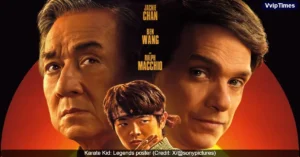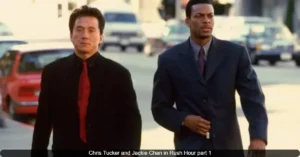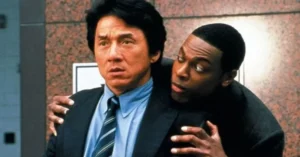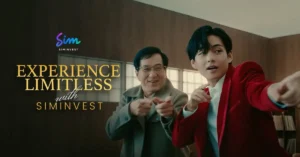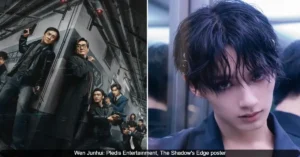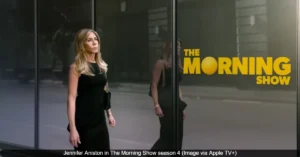Sammo Hung, the legendary martial arts icon, has maintained his commitment to practical, body-driven action even as modern cinema shifts toward computer-generated effects. The veteran, whose career spans over five decades, shared his views on the evolution of martial arts films during an interview with Variety. His insights come at a time when Hollywood increasingly mirrors Hong Kong action techniques, yet Hung remains firm in preserving the traditional style he helped pioneer.
Career Beginnings
Sammo Hung’s journey in the film industry started in the 1960s. He has built a reputation through his work in both front of the camera and behind it. Hung’s early roles alongside Bruce Lee in films like Enter the Dragon laid the foundation for his enduring career. Over the years, he transitioned into directing and producing, contributing to films that have defined Hong Kong action cinema. His collaborations with stars like Jackie Chan and Yuen Biao have resulted in many memorable moments, as he recalls fondly his time shooting classics such as Project A and Dragons Forever.
Martial Arts Philosophy
Hung’s views on modern filmmaking reveal a strong preference for authentic, physical action over reliance on digital effects. He explained his approach by stating, “I’m preserving the JC style, not CG.” His emphasis on the physicality of martial arts contrasts sharply with the growing use of computer graphics in action scenes. Hung clarified that while he does not dismiss the benefits of CGI, his focus remains on expressing energy and character through real stunts. This practical approach has set him apart in an era where many films lean heavily on digital enhancements.
On Directing Challenges
Directing action films brings its own set of challenges, a fact that Hung highlighted during the interview. He noted that the responsibility of directing means managing every single moment on set. Unlike acting or producing, directing requires a continuous and intense focus on how each scene unfolds. Hung’s candid reflections on these challenges underscore his dedication to maintaining high standards in martial arts filmmaking. His ability to balance the technical demands of modern cinema with a commitment to traditional techniques reflects his deep passion for the craft.
Hollywood Influence
Modern Hollywood has increasingly drawn inspiration from Hong Kong action films. Hung observed that many in the West are adopting the styles and trends of classic Hong Kong cinema. Despite this influence, he remains dedicated to the techniques that defined his earlier work. He pointed out that while Hollywood incorporates Hong Kong trends, his work continues to focus on using the human body to express action. His commentary suggests that even as film technology evolves, the core values of martial arts remain unchanged. The authenticity of performing physical stunts continues to deliver a unique energy that digital effects cannot replicate.
Changing Film Techniques
The evolution of martial arts choreography has been significant since Hung began his career. The filmmaking process once relied on straightforward narratives and fixed characters. Modern action films now face more complex challenges, with storylines and characters becoming increasingly intricate. Hung’s experience with films like the recent action drama Twilight of the Warriors: Walled In, which broke box office records in Hong Kong and was chosen as an Oscar contender in the region, highlights how sensitivity in storytelling has evolved. The changes have pushed filmmakers to rethink every aspect of production, from choreography to narrative design.
Legacy and Inspiration
Reflecting on his extensive career, Hung shared memories of working with Bruce Lee and later with Donnie Yen. The difference between these experiences has shaped his perspective. Working with Bruce Lee meant following the lead of a true pioneer, whereas his later collaborations saw him stepping into a leadership role. Hung’s remarks underscore his belief that each film, regardless of its scale or the era in which it was made, holds equal importance. He expressed hope that younger filmmakers would learn from his body of work, drawing inspiration from the physical authenticity and creative energy he consistently brought to his projects.
Hung also touched on the balance between hard work and luck in the film industry. His advice for aspiring filmmakers emphasizes that while dedication is essential, sometimes fortune plays an equally important role. This pragmatic outlook resonates with those looking to succeed in the competitive world of action cinema.
Sammo Hung’s ongoing participation in major industry events, such as his role as jury president at the Asian Film Awards, demonstrates his continuing influence. His presence at events like the Hong Kong FilMart further solidifies his standing as a mentor and pillar of martial arts cinema. Hung’s commitment to preserving the essence of traditional martial arts stands as a testament to his lifelong dedication, even in an industry rapidly transforming through technological advances.
Also Read: SEVENTEEN’s Jun to Star Alongside Jackie Chan in Action Film the Shadow’s Edge
For more updates on Sammo Hung, tune in to Vviptimes.
SOURCE: Variety


